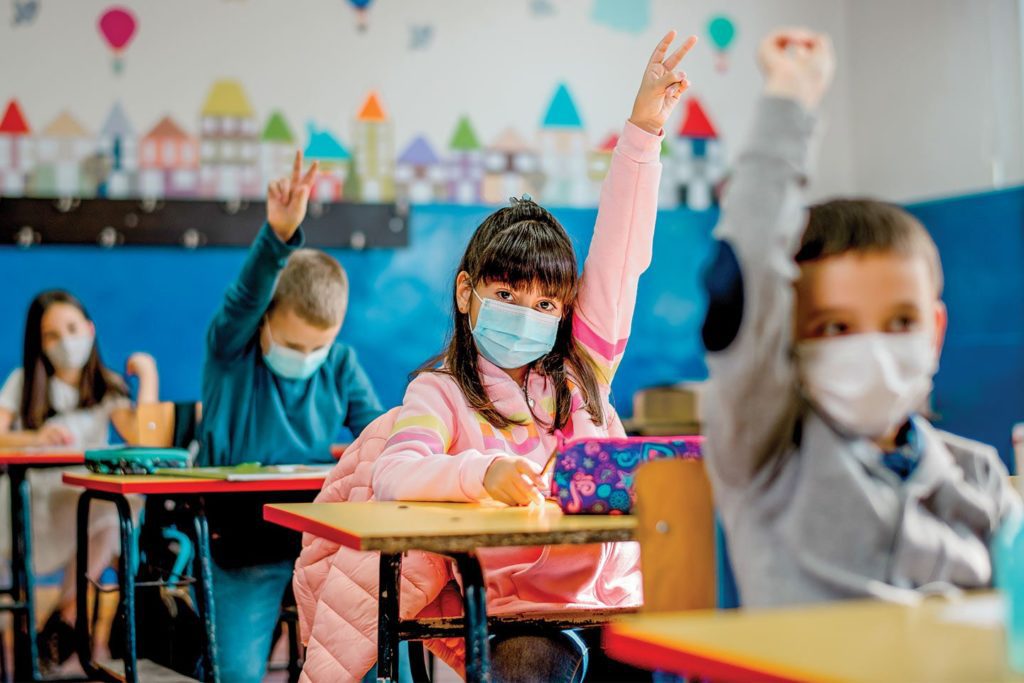Going Old-School
In pre-pandemic days, “Back to School” was a fairly momentous occasion. It meant new outfits, new pens and notebooks, and a new routine. For parents and students alike, it was bittersweet – children were sad to see the carefree days of summer vacation end, while parents might regretfully anticipate a reduction in parent-child bonding time. But it also meant reconnecting with friends at school and, for parents, having a little more time to themselves.
Ever since COVID-19, however, things have drastically changed. Remote learning became prevalent, kids have become accustomed to seeing their parents more often than their peers, and safety concerns prevail. But now, as students of all ages gear up to return to full-time in-person schooling, what does this mean for children and teens, as well as for the adults who worry about them?
“Returning to school has always been the goal during this pandemic, but we needed to make sure it could be done safely,” says Dr. David Sheron, a medical resident in general pediatrics at Children’s Hospital at Erlanger. “Schools provide a host of benefits to children and adolescents, such as social/emotional well-being, opportunities for physical activity, and visual and tactile learning.”


However, the list of benefits of in-person learning is countered by an equally long list of anxieties among some children and parents.
“The response to going back to school has varied, depending on the age of the child,” explains Dr. Sheron. “Our younger children have little concerns and are excited to go back to school, see their friends, and so on. Our adolescent population has more concerns returning to school, but these are unrelated to the pandemic. Going back to large group classes and the reintroduction to negative social situations such as bullying, tobacco, alcohol, and drugs are the forerunning sources of apprehension among this age group.”
To help them readjust to in-person learning, Dr. Sheron suggests easing children back into a more school-like mind frame and routine, even before classes start again. He recommends modifying their schedule to coincide with regular school hours – usually, 7 a.m. to 3 p.m. – while gradually adding in more customary school-based pursuits. “This routine should include educational activity, physical activity, extracurricular activities, and homework,” he says. “With some exceptions, most students will transition seamlessly.”
As for getting kids used to group socialization again, Dr. Sheron advocates reintroducing more play dates and meet-ups with friends, especially in outdoor locations such as backyards or parks. If safety is the main concern, he encourages abiding by not only local ordinances and regulations regarding social distancing and masking, but also your own comfort level. “Parents, children, and adolescents will likely have other options if they do not feel safe, or if their specific situation is not conducive to returning to in-person learning,” he says. But to help put parents’ minds at ease, he reminds them that the CDC and local health departments are working every day to make sure that a return to on-site schooling is fully safe, especially as vaccinations continue.
For children who are still hesitant, Dr. Sheron says that parents should remind them of how important school is, make sure they are getting enough sleep and staying healthy, and remain attuned to their behavior and emotions as they get used to being back in school, checking in with them regularly to see how they are adapting.
And for the parents who remain reluctant to see their kids return to the classroom?
“It is important for parents to understand that sending their child or adolescent to school provides learning opportunities that cannot be replicated at home,” Dr. Sheron says. “Keeping this in mind will help parents cope and understand that they are doing what is best for their child.”
Another option is homeschooling. However, Dr. Sheron insists that when teaching kids at home, it’s important to also incorporate homeschool group activities that allow for social and emotional interactions. “The development of these learning and life skills is just as important as reading, writing, and arithmetic,” he says.
Written with overview by Dr. Karla Garcia, Children’s Hospital at Erlanger Pediatrician, Outpatient Clinic Director



Dr. David Sheron
General Pediatric Resident, Children's Hospital at Erlanger

